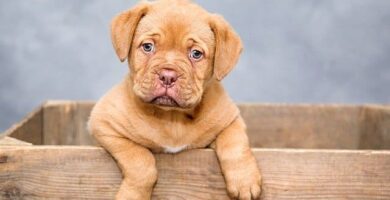In dogs, hair loss is common. In fact, almost all dog owners end up noticing that their dog loses hair. Most of the time, it is the typical seasonal change of hair for your dog’s breed.
Other times, something else, such as parasites, stress, canine allergies, or another health problem, may be the reason for hair loss in dogs.
Learn the most important information about dog shedding, as well as the possible causes of a dog losing hair.
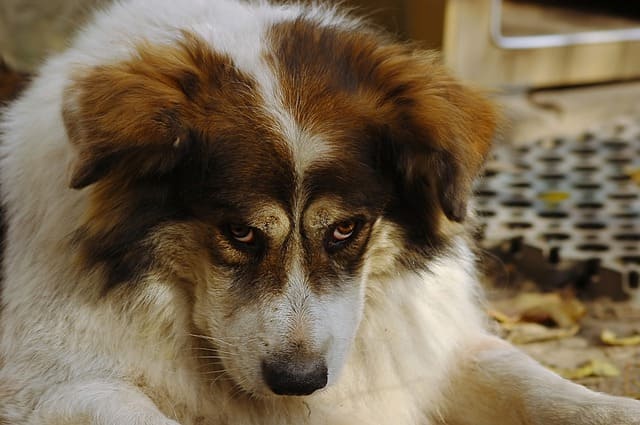
What is normal and abnormal hair shedding in dogs?
When a dog naturally loses hair to make room for new hair growth, it is said to be “shedding.” In addition, molting helps the distribution of healthy natural oils in the dog’s coat.
The molting rate of a dog depends on its breed, its state of health and its type of coat, as well as the season of the year. Therefore, the molting process appears differently in different breeds of dogs.
It is essential to keep in mind that almost all dogs molt (except for those without hair).
As annoying as your dog’s molt is, it can’t be avoided or stopped. But you can take some steps to make the process less difficult for both you and your dog.
Regular molting is a normal, healthy part of most dogs’ lives. However, excessive hair loss in dogs can also indicate a medical problem that requires attention. Therefore, consult your veterinarian if you notice any unexpected hair loss in your dog, such as patchy hair loss, dry and itchy skin, or other symptoms of a sick dog.
No products found.
Changes of constant ate
Your dog molts year-round, something you’ve no doubt already noticed. This is because all animals with hair regularly molt. Each hair has a natural life cycle that involves growth and molting.
Race, age, environment, health, and hormone levels all influence how quickly hair grows and sheds. The length and texture of your dog’s hair are determined by genetics and these elements.
Some dogs have hair that never stops growing, and because each hair shaft lasts a long time, they lose very little overall. Other dogs molt more frequently because their undercoat is thicker and the hair shaft lasts less.
Dog molting season
Although most dogs molt year-round, they tend to molt more in spring and fall. Dogs shed their hair in spring to lighten their outer coat in anticipation of summer. They also shed their hair in autumn to make room for a cooler and warmer undercoat for the winter.
Dog shedding in winter
In winter, does your dog change? As the days get shorter, the trees lose their leaves, and your dog will also lose more hair as his body prepares for winter.
The hormonal alterations caused by sunlight, which favor hair growth, are responsible for this phenomenon.
Yourdog will shed its summer fur just before the cold arrives and the days begin to shorten to prepare for the thicker and more protective winter coat.

Since their body temperature is usually the same indoors, domestic dogs and cats will not be greatly influenced by the arrival of winter, so they will molt less. Do you let your dog spend most of the day outside? Then, just before the beginning of winter, you will begin to notice a little more molting. In any case, molting in winter is a typical procedure for most dogs, even though all dogs are different and do not molt in the same way.
No products found.
Therefore, seasonal molting is likely to be the culprit if your dog starts shedding more during the summer or winter.
Breed-specific dog molt
It is convenient to take into account the molt when choosing the ideal dog for you, since the breed considerably influences the amount of molting of a dog.
Others barely molt. Some dog breeds molt a lot. Dogs with thick fur or adapted to cold places tend to molt more than other breeds. For example, Golden Retrievers have a thick double coat and molt a lot.
Let’s examine the breeds of dogs that molt more and less.
When do dog puppies lose their fur?
Do you have a puppy? A dog usually begins to lose hair for the first time when it begins to lose puppy fur. Puppies have a single layer of soft, fluffy hair when they are born.
But their puppy fur loses its softness over time. Over time, dogs lose their puppy coat and develop a stiffer and thicker adult coat.
Puppies usually begin to lose their puppy fur between four and six months of age, although it can start as early as three months or as late as the first year. This process can take anywhere from a few weeks to a few months to complete.
It’s natural for your dog’s coat to appear dirty or even change color during this transition period. However, especially if your puppy is of a shorthair breed, you may not even notice that he is molting.
The transformation can be extremely dramatic for other dogs. Some even go through a period of “ugliness” in which they appear a little dull for a few months while their adult fur develops.
Since he is a puppy, get your dog used to brushing and grooming. In this way, you will not be afraid of the brush and can make the molting process more pleasant for you and your pet.
See your veterinarian if your puppy has red, scaly or inflamed skin, areas of hair growth, or any of these symptoms.
Unusual molting: signs of canine hair loss
If your dog loses hair in large quantities, it may not be a normal molt. It can be a symptom of a deeper problem that needs to be resolved.
Of course, the extra hair you discover all over your house is the most visible sign of hair loss in dogs. It may be accompanied by other signs that indicate your dog’s discomfort.
Watch for these signs of canine hair loss
- Scaly or dry skin
- Scratching and itching
- Itchy or discolored skin in dots
- Dandruff
- Brittle, dry hair
- bald areas
What are the causes of my dog’s hair loss? Main reasons for canine hair loss
Seasonal or continuous molting is typical, as we have said before. However, it can be cause for concern if your dog exhibits any of the symptoms mentioned above or if there is something that seems not right in his shedding form.
Additional hair loss in dogs can be triggered by the following events:
- Allergies
- fungal or bacterial infections
- fleas, scabies and many parasites
- Illness
- hormonal problems
- Genetics\NMedicamentos
- Alopecia
- Anxiety and tension
- Excessive care
- Nutritional problems or deficiencies
- pregnancy or lactation
- Dehydration
- Sterilization
To talk to a specialist about your dog’s symptoms, consult your veterinarian. A veterinarian can diagnose the possible reasons for hair loss and offer advice on available treatments.

Suggestions to reduce dog shedding
How to control dog shedding is a question asked by all dog parents who have to deal with their dog’s usual shedding. Here are our top suggestions for managing dog molting:
Brush your dog regularly
The most important step you can take is to give your dog a daily brushing. Brushing helps keep your dog’s hair in place by removing loose hairs and redistributing oil from his skin.
Healthy hair has a greater propensity to stay on your dog’s body and get away from his furniture. Daily brushing is essential for dogs that shed a lot of hair. For dogs with less molting, weekly brushing is usually sufficient.
Every dog owner should have a good brush. To help with molting, there are certain specific brushes.
- PROFESIONAL EN TODOS LOS SENTIDOS – PARA PERROS Y GATOS Este cepillo para perros y gatos está diseñado con precisión profesional para ofrecer un cuidado excepcional del pelaje. Ideal como cepillo perro pelo corto o cepillo perro pelo largo, gracias a su diseño ergonómico y a la efectividad de sus cerdas, proporciona resultados visibles desde el primer uso.
- Diseño de un toque, cepillo fácil de limpiar: El botón azul en el mango opera un mecanismo muy simple e ingenioso para eliminar todo el cabello muerto y la suciedad. El diseño de cerdas retráctiles garantiza que el cepillo de cuidado se pueda almacenar de manera segura y fácil en su juego de cuidado cuando no esté en uso
- FUNCIONALIDAD: Nuestro cepillo, ligero y con mango ergonómico, esta conformado por púas de acero con goma en la punta para peinar el pelo de su perro o gato sin hacerle daño con el fin de quitar el pelo muerto y desenredar los nudos que pueda tener.
- Cepillo 2 en 1: El lado con puntas redondas elimina la pérdida de pelo muerto y la capa inferior, mientras que el lado suave peina delicadamente el pelaje del animal al eliminar el pelo muerto y la suciedad.
Keep your dog clean
Since they are more susceptible to allergies, illnesses, and infestations, dirty dogs are more likely to be sick dogs. Therefore, a natural technique to stop hair loss in your dog is to keep it clean.
Every time your dog enters the house after spending time outside, you can use a damp towel to gently wipe dirt, debris, and allergens from his coat and paws. At the right stations, be sure to thoroughly inspect your dog for weeds, ticks, and other hazards.
You can keep your dog safe, clean and healthy by always knowing where he is. With a GPS tracker for dogs, you can follow your dog wherever he goes and observe all his activity.
Regular dog baths are also beneficial, but only when done with a specifically developed shampoo.
Your dog’s regular baths favor loose hair falling into the bathtub and not on his furniture.
Many baths can dry out the skin and cause hair loss. You may be interested in knowing how to keep your dog clean without bathing him.
Encourage your dog to drink water
Another strategy to combat canine hair loss? Hydration. Make sure your dog has access to enough fresh water at all times.
Dry skin due to dehydration is the cause of excessive molting. Try placing more than one bowl in various places in the house and garden to encourage your dog to drink the daily amount of water he needs.
Provides a nutritious diet
Dogs, just like humans, need the right ratio of vitamins and minerals to maintain good health. They may show signs such as hair loss if they don’t get enough vital nutrients.
For example, a lack of zinc or copper can lead to hair loss in dogs. If you give your dog a nutritious meal, you can make sure he gets the essential minerals.
Whenever possible, choose high-quality, meat-rich and grain-free foods. This type of food is easier to digest, so your dog will have no problems with it.
Healthy dog foods help minimize skin shedding and dryness, while promoting better health.
Diet-related shedding is more common in dogs with food allergies. If your dog suffers from food allergies, try a variety of foods and consult your veterinarian. Introduce a small amount of olive or flaxseed oil that contains fatty acids. This will improve the overall texture of your dog’s coat.
Apply preventives against fleas and ticks
Skin irritation causes more molting. Fleas cause skin irritation. This indicates that dogs with flea problems constantly scratch, which causes hair loss.
Flea control will prevent itchy skin, dandruff and excessive shedding of hair in your dog. If you’re not sure how to keep ticks and fleas at bay, take your pet to the vet.
- Un repelente esencial a base de aceite para defender a su perro contra pulgas, garrapatas, moscas y otras plagas.
- Por qué es necesario Las picaduras de garrapatas pueden causar infecciones, abscesos, parálisis e incluso la muerte. La fórmula con ingredientes naturales para ayudar a prevenir parásitos molestos y eficaz contra una variedad más amplia de garrapatas para morder a tu perro.
- 3 MESES DE PROTECCIÓN contra pulgas, garrapatas y mosquitos
- Es adecuado para perros y gatos a partir de 12 semanas
- SIN PRODUCTOS QUÍMICOS ADHESIVOS: el mejor aerosol para pulgas y garrapatas de Vet's formulado para eliminar plagas chupadoras de sangre como pulgas, garrapatas y ácaros y sus huevos, proporcionando un control de plagas duradero sin productos químicos agresivos
- ¿Por Qué Elegir el Antipulgas y Garrapatas en Polvo de animigo? - Proteger a tu amigo de cuatro patas contra pulgas y garrapatas nunca antes fue tan sencillo gracias a nuestro polvo antiparásitos. Una mezcla de ingredientes naturales con delicioso sabor a pollo que puedes añadir fácilmente a su dieta diaria para mantener a los indeseados bichitos bien lejos de tu mascota.
Decrease Your Dog’s Anxiety
Dogs that are stressed, scared, or afraid may lose their hair as a result of their confusion. Make sure your dog has everything he needs to live comfortably, so that his life is as stress-free as possible.
You can calm your dog by minimizing significant changes and stimuli that frighten him (such as shock and loud noises).
Summary of the molt of the dog
Except for the hairless, all dogs molt. Therefore, it is usually normal for your dog to lose hair. Depending on the breed, the type of coat and the season of the year… You can know how much molting you should foresee.
Dog shedding can’t be avoided, but it can be controlled with regular brushing, water intake, a balanced diet, and other methods that help maintain your dog’s health.
Hair loss can be a sign of something more serious if your dog has symptoms of illness or unexpected hair loss, such as red, dry skin, bald spots or persistent scratching.

Dog shedding may seem like a nuisance, but it’s a small price to pay for the joy our furry family members provide to our lives.
Contact your veterinarian to make a diagnosis and determine the best course of action for your dog if you are unsure of the reason for the hair loss.
Do you help us share?

Why do dogs bury bones?
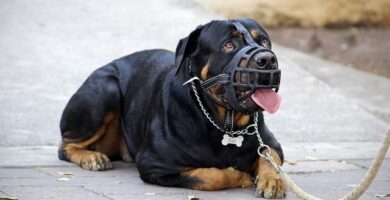
Muzzle
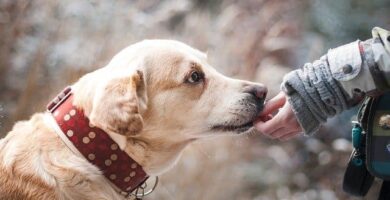
My dog doesn’t want to eat anymore
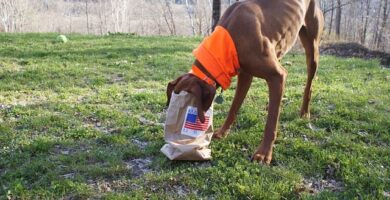
My dog ate a plastic bag
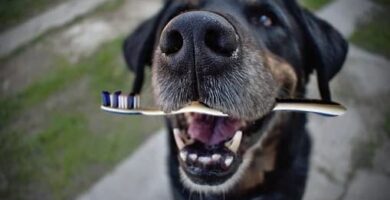
Why do you need to brush your dog’s teeth daily?
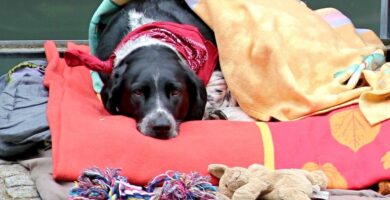
Allergy season for dogs
- Why do dogs bury bones? - January 2, 2023
- How long is a dog’s pregnancy? - December 24, 2022
- Why do dogs mark territory? - October 24, 2022













